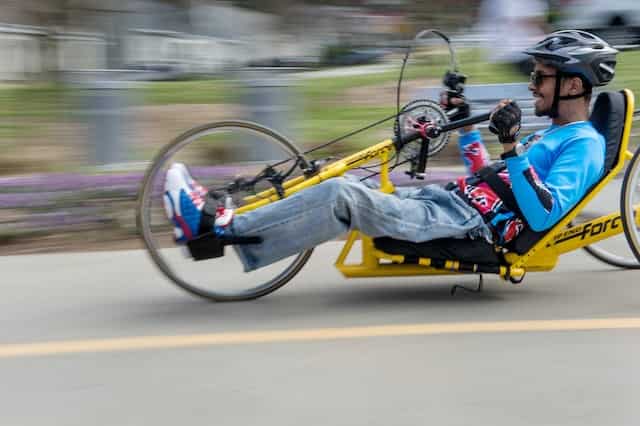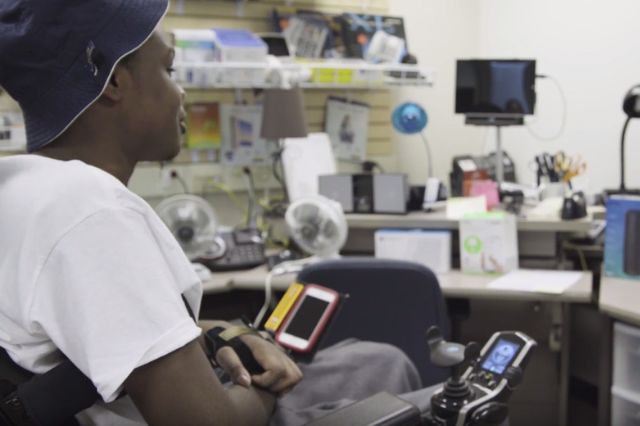Shepherd Step: Locomotor Training Program at Shepherd Center
Treatment for Incomplete Spinal Cord Injuries
For individuals with motor incomplete spinal cord injury, Shepherd Center offers a program of walking interventions directed by a specialized group of therapists. This program, Shepherd Step, aims to help participants regain the highest possible functional level of walking.
Shepherd Center is a proud partner of the Christopher and Dana Reeve Foundation and the Centers for Disease Control and Prevention (CDC) as part of the NeuroRecovery Network (NRN). This partnership exists for only seven rehabilitation centers in the country.
Shepherd Center provides and develops therapies to promote functional recovery and improve the health and quality of life of people with paralysis. Though Shepherd Center is not enrolling participants in NRN, staff members contribute to research to translate the latest scientific advances into effective, activity-based rehabilitation treatments.
Shepherd Step Program
Shepherd Step, an intensive walking program, assists participants with motor-incomplete spinal cord injury to regain the highest possible functional level of walking. The dedicated professional staff of Shepherd Step uses specialized training to deliver walking interventions. Physician and physical therapist evaluations may result in using the following interventions and devices:
- Body-weight-supported locomotor Training (BWST) with either manual or robotic assistance
- Neuroprostheses
- Orthotics or Braces
- Training in Over-ground Walking
What is Body-Weight-Supported Locomotor Training?
Body-weight-supported locomotor training uses specialized body-weight-supported treadmill systems. Locomotor training suspends the participant in a harness over a treadmill while a specially trained team or the robotic system moves the participant’s legs to simulate walking. Designed to help individuals regain function, this training progresses from the treadmill to walking over the ground. Locomotor training stems from recent advances in the scientific understanding of neural plasticity. Neural plasticity is the ability of neurons in the nervous system to develop new connections and “learn” new functions. Recent studies show the spinal cord's role in controlling stepping and standing. Locomotor training may work to “awaken” dormant neural pathways by repetitively stimulating the muscles and nerves in the lower body.
Research shows that locomotor training using body-weight-supported treadmill training improves over-ground walking in individuals who have movement in their legs. Research has not shown this therapy to improve walking in patients who do not yet have movement in their legs.
What are Neuroprostheses?
Neuroprostheses deliver functional electrical stimulation (FES) to help move the legs. Functional leg movement is not possible without this device. Neuroprostheses use electrodes placed over the that connect to a control box and a cable connected to a walking device. The box houses the command switch(es) for step functionality. The most widely used FES devices also address foot drop to improve over-ground walking. Research shows promising results in all outcome measures of walking, including functional mobility, speed, spatiotemporal parameters, and the physiological cost of walking.
What is Training in Over-Ground Walking?
For individuals with strong leg movement who can support their body weight in an upright position, over-ground walking may be an option with or without specialized equipment and custom orthotics.
Potential Outcomes of Locomotor Training
Significant research shows the effectiveness of locomotor training in promoting functional recovery and improving the health and quality of life of people with paralysis. As a result, this training is a standard of practice at Shepherd Center to integrate locomotor training across the continuum of care for individuals with leg movement. Patients who participate in locomotor training typically experience the following:
- Improved quality of walking.
- Increased walking speed.
- Increased walking endurance.
- Decreased use of devices.
The program serves inpatients and outpatients, including those in Shepherd Center’s Spinal Cord Injury Day Program and Beyond Therapy®.
Specialized Equipment Used For Locomotor Training
- Bioness/Walk Aide Neuroprosthesis – A device to stimulate the lower leg during locomotor training
- Lokomat® – Robotics-assisted treadmill training with body-weight support
- Orthotics or Braces – Evaluation and training completed in conjunction with a consulting orthopedist
- Pacer and Arjo – Professional equipment resembling a “super” walker used to provide over-ground training
- Therastride – Manual treadmill with body-weight support
- Zero-G – A static or dynamic system with body-weight support used with over-ground training
Locomotor Training at Shepherd Center Requirements
Individuals selected for Shepherd Step must meet the following guidelines:
- Must safely tolerate upright position and weight-bearing.
- Have defined and realistic functional ambulation goals.
- Must have a prescription from a physician.
Shepherd Step Locomotor Training Contact Information
For additional information, contact a Shepherd Center Post-Acute Admissions Representative at 404-350-7502.





